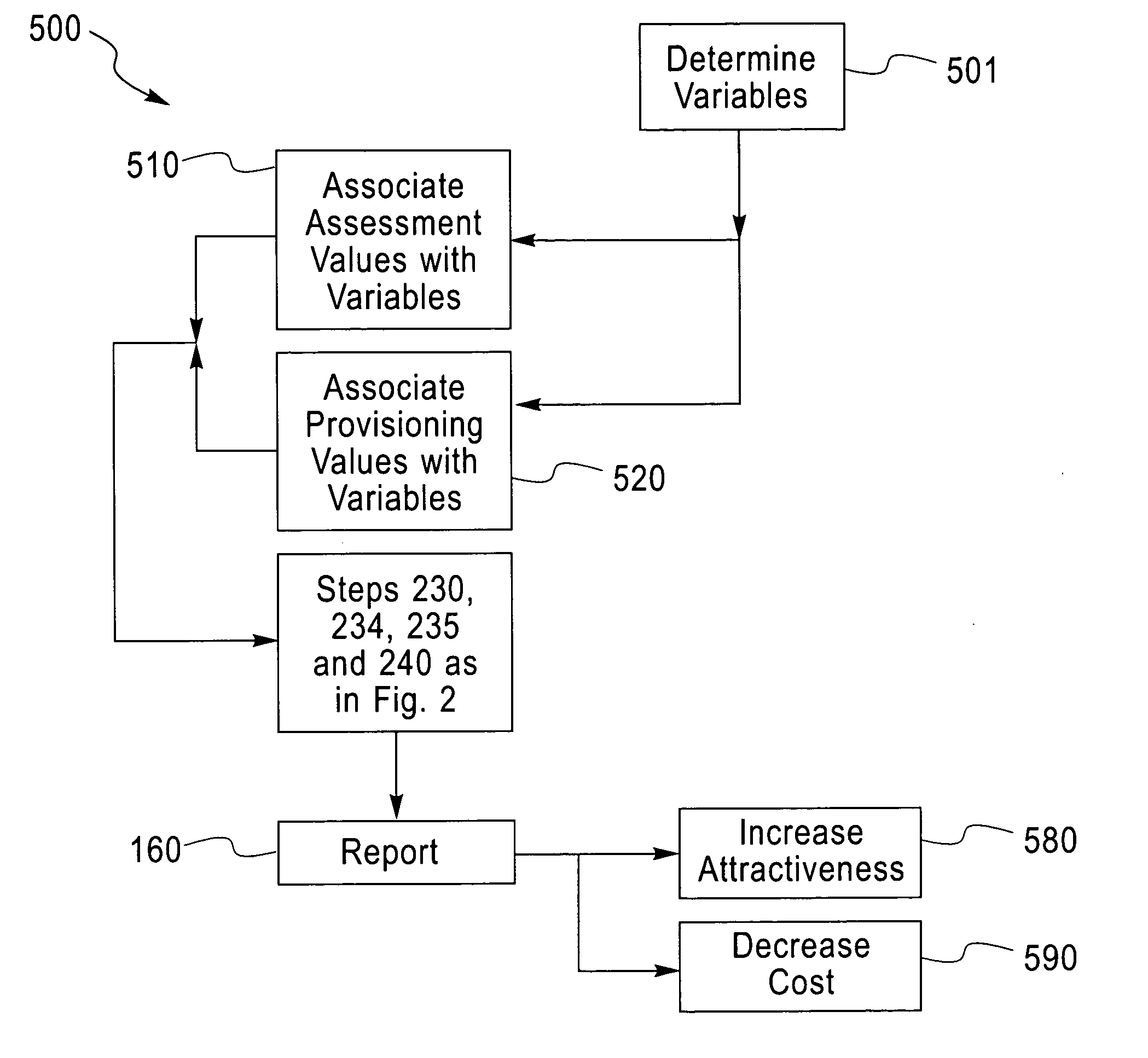Method and system for identifying barriers and gaps to E-learning attraction
a technology of barriers and gaps, applied in the field of methods, can solve the problems of not systematically measuring the motivation of learners, not employing a systematic and rigorous method to assess the “gravitation” learners, and limited value of rigorous product comparisons to determine the potential success of learning programs
- Summary
- Abstract
- Description
- Claims
- Application Information
AI Technical Summary
Benefits of technology
Problems solved by technology
Method used
Image
Examples
Embodiment Construction
[0028]FIG. 1 is a block diagram 100 of one example embodiment of a system, method, and service using the present invention. The evaluation part of the invention 150 evaluates the attractiveness of one or more learning programs / information for one or more end users 125 with respect to the cost (e.g., time, money, effort, resources, facilities, and people) of providing the learning programs / information to the stake holder 130. In a preferred embodiment, the evaluation part of the invention 150 comprises a general purpose computer system 150 communicating with one or more databases 170. Some information in the databases 170 is precompiled or received over a communication path 140. In a preferred embodiment, the communications path 140 is one or more well-known network paths (e.g., internet, intranet, cable network, or phone network) connected to the evaluation system 150 through one or more known connections 155. However, the communication path 140 can also be a human service provider....
PUM
 Login to View More
Login to View More Abstract
Description
Claims
Application Information
 Login to View More
Login to View More - R&D
- Intellectual Property
- Life Sciences
- Materials
- Tech Scout
- Unparalleled Data Quality
- Higher Quality Content
- 60% Fewer Hallucinations
Browse by: Latest US Patents, China's latest patents, Technical Efficacy Thesaurus, Application Domain, Technology Topic, Popular Technical Reports.
© 2025 PatSnap. All rights reserved.Legal|Privacy policy|Modern Slavery Act Transparency Statement|Sitemap|About US| Contact US: help@patsnap.com



